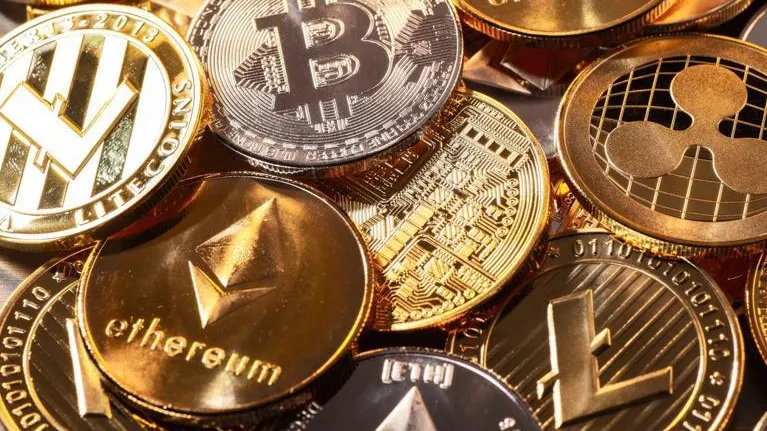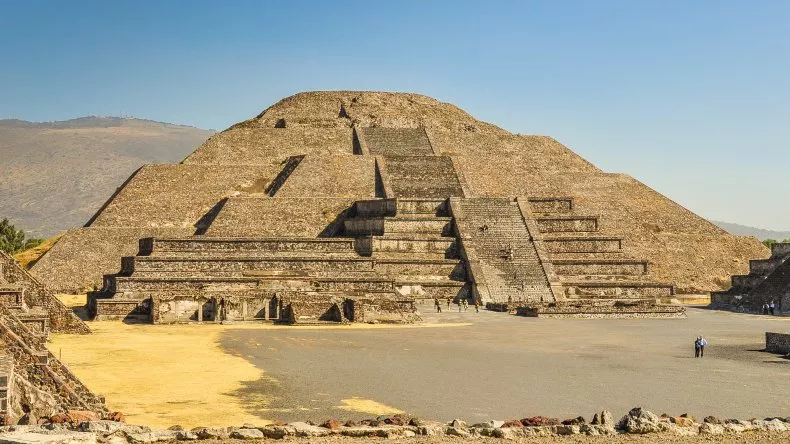Cryptocurrencies are going nowhere. However, big questions remain over their longevity, the amount of energy they consume and the morals of investing.
So, should you buy, sell or ignore?
"In May 2021, Bank of England governor Andrew Bailey cautioned against investing in cryptocurrencies, stating, 'Buy them only if you're prepared to lose all your money.' One of the primary concerns with cryptocurrencies is their lack of intrinsic value. This raises questions about their viability as investments compared to traditional currencies. Historically, currencies like Sterling were backed by gold until significant reserves were sold off between 1999 and 2002. Such decisions, made independently of public opinion, highlight the appeal of decentralized cryptocurrencies, where no single entity holds absolute control. Cryptocurrencies, especially those designed to emulate gold-backed systems, gain traction in this context.
Bitcoin, created by the pseudonymous Satoshi Nakamoto, mirrors gold's scarcity and difficulty of acquisition through mining. Dominic Frisby elaborated on this aspect, noting that Bitcoin's value is derived from its production cost and other factors. Mining Bitcoin involves significant electricity consumption, with no guarantee of financial returns, underscoring the risks involved.
Mining cryptocurrency entails various risks that warrant careful consideration for potential profitability.”
The primary expense in mining is energy. Laura Shin from Coin Trade & Mine, a website dedicated to mining and trading, explained that any cryptocurrency with a finite issuance over time becomes notably more complex to mine. Older coins like Bitcoin, which has been around for 12 years, pose greater mining challenges compared to newer alternatives. Generating profits through mining requires substantial investments in hardware and power supply. Thus, minimizing these expenses is crucial for profitability.
Arvind Narayanan from Princeton University presented evidence to the United States Senate Committee on Energy and Natural Resources, revealing that Bitcoin miners are computing billions of hashes per second. Most mining activities occur in large-scale commercial setups using specialized computing devices designed solely for this purpose.
Narayanan estimated that these operations collectively consume nearly 1% of the global electricity supply, equivalent to the energy consumption of states like Ohio or New York. His testimony, provided in 2018, coincided with Elite Fixtures' calculation of the energy cost to mine a single Bitcoin across 115 countries. The expenses varied significantly, ranging from $1,190 in Trinidad and Tobago to $26,170 in South Korea. In the UK, the cost stood at $8,402. Hence, to maximize profits, setting up mining operations in Trinidad and Tobago would have been the most economical choice.
Even in those circumstances, mining isn't a quick path to wealth. As previously mentioned, the process of mining cryptocurrencies becomes progressively more challenging over time. By 2020, Zipmex, a digital assets exchange, revealed that "it requires a substantial setup nearly a month to mine a single bitcoin. However, this setup isn't as financially advantageous as one might assume. After factoring in electricity expenses, as well as hardware and software costs, one might only profit around 0.1 bitcoin per month at best. For most setups, factoring in electricity expenses and some labor, the total cost to mine one bitcoin per month amounts to $73,000." Currently, a bitcoin is valued at $34,471, which falls below Zipmex's estimated costs. Nonetheless, this doesn't discount the endeavor, as the value of a single coin could potentially soar to $100,000 by year-end. Additionally, Zipmex suggests that "with efficient mining pools and dependable hardware, it's possible to at least break even while generating some additional income." In theory, if electricity costs significantly rose in one area, relocating the mining operation elsewhere could optimize profits. However, the reality is far more complex.
The mining landscape for Bitcoin has undergone significant shifts. In April 2020, China dominated with 65% of mining activity, while the US trailed at 7.2%. However, this dynamic is rapidly evolving. China initiated a crackdown on Bitcoin mining and trading in May 2021, leading to immediate repercussions: Bitcoin and other cryptocurrencies plummeted by 15% in value. Subsequent measures in Inner Mongolia and Sichuan further exacerbated the situation. Inner Mongolia revoked business licenses for telecommunication and internet firms engaged in crypto mining, citing energy efficiency targets, particularly pertinent in coal-dependent regions. Sichuan, known for its hydroelectric-based mining, also joined the crackdown. By the end of June, Bitcoin's value had plummeted by 50%, prompting a flood of mining machines into the market. Unlike selling standard electronics, offloading specialized mining hardware proved challenging, underscoring the seismic shifts in the industry.
This wasn't the initial instance where the worth of mining equipment plummeted drastically. In November 2018, the International Business Times highlighted a scenario where Bitcoin, hitting a 13-month low of $4,300, led small and medium-sized miners in China's Xinjiang and Inner Mongolia to sell their mining machines in the secondhand market. These miners found it unfeasible to cover the electricity costs with their older machines. A machine purchased for about 20,000 yuan ($2,885) a year ago was now being sold for a fraction of that price, ranging between 100 yuan to 1,600 yuan. Discussions on Reddit mirrored the difficulty in selling these machines even at such low prices.
The alternative solution suggested was to relocate the operation to a more favorable jurisdiction. Although flying the hardware between locations could minimize the time taken, it came with a caveat—air freight costs could be up to five times more expensive than surface transport. Consequently, the preferred mode became sea freight, despite its own cost implications. Moving goods by freight is quantified in shipping containers, typically measured in twenty-foot equivalent units (TEU) or forty-foot equivalent units (FEU). Some vessels, such as the Ever Given famously stuck in the Suez Canal, can accommodate up to 20,000 TEU.
Over the past six months, the cost of ferrying an FEU across the Pacific surged nearly 200% to surpass $6,000 per unit. Moreover, the estimated transit time for shipping a single 20ft container from Shanghai to San Francisco has increased to up to 32 days. For those seeking to leverage cheaper electricity, the transit time from Guangdong to Trinidad and Tobago could extend to a potential 41 days. During transit, the hardware remains idle, resulting in lost revenue that could overshadow the shipping expenses.
Ideally, to ensure profitability in a mining operation, it's crucial to establish in a jurisdiction conducive for long-term sustainability.
The Intricacies of Bitcoin Mining: Is it Worth the Effort?
While the idea of generating your own Bitcoin through mining might sound appealing, this passage dives into the realities of this process, revealing it's not quite a walk in the park. Here's a closer look at the challenges and considerations:
- Steep Startup Costs: Forget using your regular computer. Profitable mining relies on specialized hardware like ASIC miners, which can cost thousands of dollars (e.g., the Antminer S19 Pro at over £6,500). Add to that the significant energy consumption of these machines, and electricity bills become a major factor. At average rates, running an S19 Pro around the clock could cost over $18 per day.
- The Long Road to Profitability: Even with powerful hardware, daily profits are modest after factoring in electricity expenses. Our example showed a daily profit of roughly $4.25, translating to years required just to recover the initial hardware cost.
- A Constant Upgrade Battle: Bitcoin mining difficulty increases over time to maintain the rate at which new coins are created. This essentially means you're constantly competing against more advanced hardware, making it necessary to upgrade your own equipment regularly to stay in the game. Early miners who relied on CPUs were quickly outpaced by GPUs, and today, ASIC miners are the dominant force.
- Cloud Mining as an Alternative: If the idea of managing hardware and skyrocketing electricity bills is daunting, cloud mining services offer a potential solution. These services allow you to participate in mining operations without the physical upkeep. Providers like Shamining or Genesis Mining handle the hardware, software, and electricity, and some even prioritize renewable energy sources for a more eco-friendly approach. However, cloud mining still involves an upfront investment and careful research is crucial. Consider factors like minimum investment requirements, contract lengths, projected profits, and withdrawal terms before committing.
In conclusion, Bitcoin mining can be a profitable venture, but it requires a significant financial investment upfront and an ongoing commitment to keeping pace with the evolving hardware landscape. Cloud mining offers a more accessible entry point, but it's not without its own considerations. Carefully weigh the costs and potential rewards before deciding if venturing into the world of Bitcoin mining is the right choice for you.
How to mine: A beginner's guide
At its core, cryptomining involves utilizing a computer's computational power to solve complex equations. While most of these equations result in no tangible outcome, occasionally, with a sufficiently powerful system, you may strike gold—discovering a coin. For a detailed overview, refer to page 33.
Furthermore, this equation-solving process serves the dual purpose of validating a block of transactions. This continual requirement for validation is a key source of controversy surrounding cryptocurrencies, as it relies on ongoing mining efforts to sustain its functionality. However, this process demands significant amounts of electricity, as outlined on page 31. Those who successfully validate transactions are rewarded with cryptocurrency.
Similarly, each currency transfer necessitates verification and inclusion in the public ledger, which is where blockchain technology becomes essential.
Once you have acquired cryptocurrency, you must store it in a wallet. With hundreds of options available, ranging from hardware to desktop applications, the choice is yours.
Are you still able to utilize a PC?
Despite the myriad issues surrounding mining, you might be pondering whether your own computer suffices or if you require a specialized rig. The answer is affirmative, albeit with numerous considerations. One option is to collaborate with others, with NiceHash (nicehash.com) being a prominent choice. However, to illustrate the risks associated with cryptocurrencies, it fell victim to an attack in 2017 resulting in the theft of $64 million worth of its coins. Nevertheless, its profit-sharing model is intriguing, even inspiring Norton to adopt a similar approach in its latest release of Norton 360 antivirus software. The concept, akin to NiceHash, involves utilizing the "idle" computational capacity of your system to mine cryptocurrency, specifically Ether in Norton's case. Any earnings are then deposited into Norton's proprietary Crypto Wallet. Nonetheless, it's crucial to underscore that employing your CPU for mining crypto is highly unwise due to its sluggishness and inefficiency in power consumption. The cost of electricity will far exceed any potential earnings. Hence, the preference for GPU-based rigs, as graphics cards, with their numerous cores and parallel processing capabilities, are more adept at mining. If you possess a discrete, robust graphics card, it might yield some cryptocurrency returns.
Official utilization of digital currencies is under scrutiny by both China and the UK, with the latter announcing in April 2021 the formation of a Central Bank Digital Currency (CBDC) Taskforce. This taskforce aims to explore the potential of a CBDC, which would be issued by the Bank of England for use by households and businesses, coexisting with cash and bank deposits rather than replacing them. However, it's important to note that the Bank of England distinguishes CBDCs from cryptocurrencies and cryptoassets, asserting that the latter currently do not pose a threat to monetary or financial stability in the UK.
The introduction of a CBDC aligns with shifting transaction trends, as traditional cash now accounts for less than a third of all transactions according to the Bank's data, with the majority being electronic transfers facilitated by debit and credit cards, automated credits, and direct debits. Despite this move towards digital transactions, the Bank of England may have missed an opportunity for a catchy name for its proposed digital currency, as the term "Britcoin" gained traction in summer 2021.
While the Bank of England remains cautious about traditional cryptocurrencies and related assets, other jurisdictions such as the Swiss canton of Zug are more open to embracing them. Zug announced in February 2021 that residents could pay their taxes using Bitcoin or Ether, viewing it as both a practical and promotional initiative due to the region's prominence in fintech and crypto operations.
Zug issues residents with QR codes for tax payments, which upon scanning, initiate cryptocurrency transfers. The conversion from cryptocurrency to Swiss francs is covered by the taxpayer rather than the canton, offering residents the potential to benefit from fluctuating exchange rates.
In a bold move, El Salvador voted in June 2021 to make Bitcoin legal tender, a decision that some analysts warn could expose its economy to the volatile nature of the digital currency. However, this designation enables Bitcoin to be used for purchasing goods, paying taxes, and repaying bank loans, with businesses mandated to accept Bitcoin with its exchange rate against the dollar determined by the market.
Different methods for generating income
In a June 2021 report by BBC News, Philip Hughes' Denbighshire cattle farm was highlighted for its unconventional approach to profitability. Alongside traditional agricultural activities, Hughes has integrated cryptocurrency mining into his operations, utilizing an anaerobic digester to convert cow manure into electricity, which powers the mining operation on-site. Hughes emphasized his adaptability by stating that if the cryptocurrency market were to falter, he would repurpose the computing power of his rigs for other endeavors. This innovative approach not only mitigates the risk associated with cryptocurrency dependence but also showcases Hughes' forward-thinking strategy.
While not everyone possesses the resources of a fully equipped farm like Hughes', there are alternative avenues for capitalizing on cryptocurrency. Investing in cryptocurrency mirrors traditional currency trading, offering the potential for profit through fluctuations in exchange rates. This practice, akin to currency speculation, has gained popularity among Britons, with a 2021 study by investment firm AJ Bell revealing that more individuals in the UK have invested in cryptocurrency than in equity. According to CryptoCoin News, the Financial Conduct Authority (FCA) estimates that approximately 2.3 million Britons now hold cryptocurrency, constituting approximately 3.4% of the country's population.
If you're not part of the group already invested, you might be questioning whether it's too late to join. Predicting the market's movements is a challenge, even more so over extended periods. Those who didn't invest back in 2010 can only reflect on missed opportunities. Nevertheless, AJ Bell's data suggests that the vast majority of people, approximately 24 out of 25, in the UK have yet to venture into digital currencies. This implies potential for growth as interest mounts, particularly if other nations emulate El Salvador and Zug.
While we refrain from offering specific advice on cryptocurrency purchases, there are various factors to weigh, including environmental considerations (refer to p31). However, if you're inclined to invest, there are crucial considerations to bear in mind. Firstly, ensure you have confidence in the platform facilitating your transactions. Some established app-based banks provide tools for crypto investments. Secondly, contemplate purchasing during market downturns to enhance the likelihood of future profits. Lastly, heed the cautionary advice from the Bank of England: only invest in cryptocurrencies if you're prepared to absorb potential losses, as there are no guarantees of returns.
Which cryptocurrency should you choose?
There are now more than 6,000 cryptocurrencies in virtual circulation and new ones are appearing every day
Bitcoin (BTC / XBT)
The first name most of us think of when someone says "cryptocurrency". Invented by the pseudonymous Satoshi Nakamoto in 2009, its market capitalisation (at the time of writing) stands just shy of $700 billion. Bitcoins are divided into millibitcoins and satoshis with, respectively, 1/1000th and 1/100,000,000 of a full-value coin.
Only 21 million bitcoins will ever be mined, of which 18.6 million are already in circulation.
Two new cryptocurrencies Bitcoin Cash (BCH)
and Bitcoin Gold (BTG) were spun off from Bitcoin in 2017. Bitcoin Gold can't be mined using the ASICs conventionally used to mine bitcoins, making it accessible to miners using traditional
PC hardware.
Ether (ETH)
The second largest cryptocurrency by market capitalisation, the global stock of Ether is worth $255 billion. Ether is the native currency of the Ethereum blockchain and is issued to miners who process transactions. Ethereum was developed as a scripted platform for adding real-world products, such as stocks, to a blockchain in the same way as units of virtual currency. As such, the Ethereum codebase is frequently used as a jumping off point for other cryptocurrencies, including NFT (see below).
In 2017, Microsoft, Banco Santander, the National Bank of Canada and around 30 other organisations formed the Enterprise Ethereum Alliance with the goal of creating a standard version of the Ethereum software that businesses can use to track data and financial contracts.
Non-fungible token (NFT)
NFTs (pronounced "nifties") attracted worldwide attention in early 2021 as a way of selling digital assets, such as the world's first tweet (for an equivalent of $2.9 million, which Twitter's Jack Dorsey donated to charity), virtual locations in computer games and pixel-based art. Crypto artist Beeple sold a single image, Everydays: the First
5000 Days, for the equivalent of $69.4 million-slightly more than what Picasso's La Gommeuse sold for in 2015.
The term "non-fungible" denotes the fact that NFTs are not directly exchangeable since they are tied to specific objects. You could, for example, swap any two Ethereum with no discernible outcome, but artworks, text and other assets recorded in the NFT ledger are unique, and thus not interchangeable, or “fungible".
Dogecoin (DOGE)
Inspired by a meme, Dogecoin is approaching its eighth birthday and has a market capitalisation of $34 billion. Its protocol is based on Luckycoin and Litecoin and, at one point in first year of existence, the number of Dogecoins being traded outranked even the longer-established Bitcoin. It's steadily increasing in value as it becomes more widely accepted and, by May 2021, its value had increased by 20,000% over the previous year, and SpaceX announced that it would accept the coin as payment for an upcoming lunar mission.
Litecoin (LTC)
A fork of Bitcoin, Litecoin was spun out of its parent cryptocurrency in 2011. Its subunits, millilitecoin and microlitecoins (or photons), are equivalent divisions to Bitcoin's millibitcoins and satoshis. However, by processing transactions in 2.5 minutes, rather than ten, Litecoin is a "faster" cryptocurrency than its predecessor, confirming transactions in less time. At the time of writing, its market capitalisation was just under $10 billion.
Basic Attention Token (BAT)
Built by Brave (the browser people on the Ethereum blockchain, BAT was used to fund further development of the browser and, on an ongoing basis, to reward online publishers when Brave users view their content. This is apt as Brave is designed, in part, to reduce the number of adverts that its users see. There is $750 million worth of BAT in circulation.
Monero (XMR)
Monero allows cryptocurrency investors to keep their holdings hidden. Transactions are encrypted so that it's impossible to see who holds what at any moment, and it's therefore said to be popular on the dark web and as a medium for settling ransomware demands. However, it will be equally attractive to anyone who believes that crypto holdings should be as private as bank balances.In 2017, the US Internal Revenue Service offered a $625,000 bounty for developers who could help it crack the Monero blockchain, among a handful of others. Should anyone succeed, the IRS might discover which taxpayers hold a portion of the coin's cumulative $3.9 billion value.
Microsoft's unnamed cryptocurrency
This one might never come to pass, but Microsoft has filed a patent for a new kind of cryptocurrency that's generated using "human body activity" rather than electricity-intensive mining. "For example," says the patent, which you can read at pcpro.link/324mic, "a brain wave or body heat emitted from the user when the user performs the task provided by an information service provider, such as viewing [an] advertisementor using certain internet services, can be used in the mining process”.
The intricacy of the "unethical currency" becomes glaringly apparent when juxtaposed with the devastating impact of a record-breaking heatwave in Canada, which has been attributed to the deaths of hundreds of individuals. It seems morally reprehensible to contribute further to this issue by engaging in cryptocurrency mining.
As explained in our mining guide, the days of generating substantial amounts of cryptocurrency through casual mining on personal computers are long gone. Instead, significant quantities now require dedicated mining rigs that consume exorbitant amounts of energy, with large-scale operations devouring approximately 1% of global electricity. This only exacerbates our struggle to achieve net zero emissions.
Interestingly, one of Bitcoin's staunchest supporters, Tesla's CEO Elon Musk, recently announced that the company would cease accepting cryptocurrency due to concerns about its growing reliance on fossil fuels, particularly coal, which has the highest emissions among fuels. This decision came merely two months after Tesla had initially embraced Bitcoin for vehicle purchases.
The environmental toll of Bitcoin mining is significant. Prior to a recent decline caused by China's ban on mining in certain regions, the Cambridge Bitcoin Electricity Consumption index equated Bitcoin's energy usage to that of a medium-sized European country like Sweden or Ukraine. With China dominating 65% of Bitcoin generation and the US trailing far behind at 7.2%, the implications of China's ban are substantial, though contingent on its longevity and whether production simply shifts elsewhere.
Russia ranks third in mining prowess, and the logistical challenge of relocating heavy mining equipment across borders will incur its own environmental costs. Dr. Larisa Yarovaya of the University of Southampton argues that Bitcoin represents an inefficient iteration of a disruptive technology and advocates for its replacement to benefit the planet's collective well-being.
Hardware production
The environmental impact of cryptocurrency mining extends beyond energy usage. The substantial assemblies of graphics cards and other components comprising mining rigs are not crafted from sustainably sourced materials; they don't consist of wood from managed forests or recycled materials.
The scarcity of graphics cards in recent months, akin to the shortage of toilet paper at the onset of the pandemic, illustrates the extent to which cryptominers have depleted supplies. To address this, Nvidia has restricted the cryptocurrency mining capabilities of certain models, ensuring some cards reach gamers. However, Nvidia's introduction of crypto-dedicated GPUs suggests a mixed approach, not wholly discouraging mining.
While Nvidia may emphasize its environmental responsibility policy, aiming to minimize the environmental footprint of its products, the reality remains that GPUs and their components involve a complex mix of materials including silicon, copper, boron, cobalt, tungsten, and various chemicals. Shortages of these materials contribute to the global CPU scarcity.
The depletion of rare-earth materials, in part due to mining for volatile virtual currencies, further exacerbates environmental concerns.
Efforts within the industry indicate a growing recognition of the harm being inflicted. The Crypto Climate Accord, established recently, seeks to rapidly decarbonize the cryptocurrency industry through a collective effort involving significant players. Its objective is to transition mining operations to utilize 100% renewable energy by 2030, a more ambitious target compared to many climate initiatives. However, given the prevalence of unofficial mining operations, particularly in China, complete mitigation of environmental impacts seems unlikely.
Even if the industry successfully transitions to solar, wind, and other renewable energy sources within the next decade, questions persist regarding whether such energy could be better utilized for more essential purposes.













0 Comments